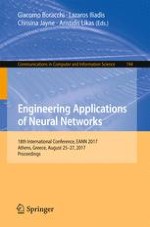This book constitutes the refereed proceedings of the 18th International Conference on Engineering Applications of Neural Networks, EANN 2017, held in Athens, Greece, in August 2017.
The 40 revised full papers and 5 revised short papers presented were carefully reviewed and selected from 83 submissions. The papers cover the topics of deep learning, convolutional neural networks, image processing, pattern recognition, recommendation systems, machine learning, and applications of Artificial Neural Networks (ANN) applications in engineering, 5G telecommunication networks, and audio signal processing. The volume also includes papers presented at the 6th Mining Humanistic Data Workshop (MHDW 2017) and the 2nd Workshop on 5G-Putting Intelligence to the Network Edge (5G-PINE).
